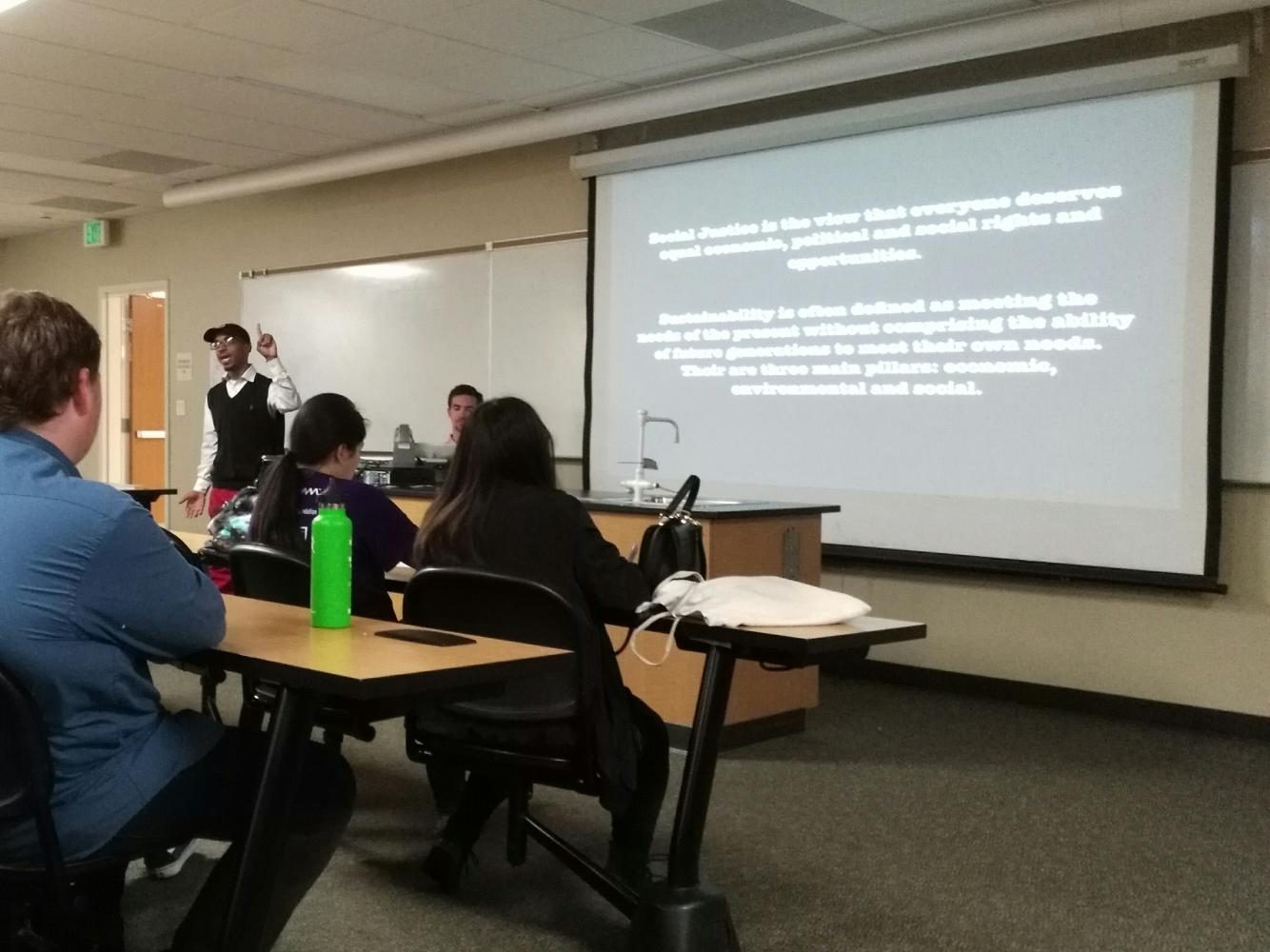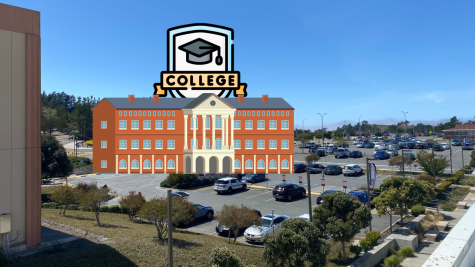Sustainability is the answer to social justice issues
Markese Bryant in an open lecture given to Skyline College students on Apr. 20, 2017.
“Sustainability is the answer to social justice issues”, social justice advocate Markese Bryant said in an open lecture given to Skyline College students on April 20 when linking the two issues which have created a larger problem.
This lecture was given as an Earth Day event for Skyline and brought together classes from different environmental sciences. Students listened in on Bryant’s lecture and learned that many of the issues plaguing poverty stricken communities could be solved through green jobs and sustainable energy. These sustainable efforts can bolster communities in economic need and can break the cycle of poverty.
Saving the planet and eliminating poverty are two very different goals. But the question was raised: Are social justice and sustainability advocates simply addressing different symptoms caused by the same root problem?
“We could solve two of the biggest problems facing humanity, which is poverty and ecological issues such as climate change,” Bryant said during the lecture. “When we focus on the economic portion of social justice, we can create the necessary link with sustainability.”
Economic justice is a vital aspect of social justice and sustainability. Most focus on the environment when talking about sustainability but marginalize the social and economic aspects. According to Bryant, it is necessary to provide social and economic opportunities to those in poverty stricken neighborhoods so that they are not targeted by police as a source of revenue.
As an example, the city of Ferguson released several reports following Mike Brown’s fatal shooting. Ferguson is an example of a city with communities that are limited due to having a very weak tax base. It was found that the police department systematically targeted poor black men as a means of supporting the city’s economy through ticketing and arrests of black men. If the city’s tax base was stronger with communities who are allowed more economic opportunities, then this can lead to a more sustainable and less violent society.
“Economics, namely unregulated capitalism, are the root of the issues in both movements,” Skyline’s Sustainability Coordinator Dainen Bocsary said. “Pursuit of the dollar over human and environmental prosperity has led to a need for social justice and environmental preservation.”
The social justice movement is concerned with preventing future incidences of police brutality against African-Americans. According to Bocsary and Bryant, this is caused by unregulated capitalism negatively affecting African-Americans and other minorities. The sustainability movement’s goal of ecologically sustainable practices may be achieved by providing readily available green jobs and comprehensive environmental science education.
“Somehow sustainability now means environmentalism,” Bryant said. “The environmental movement hijacked the concept of sustainability [and] if the social justice community started leaning toward economic justice, they will be closer to grabbing the hand of the sustainability movement.”
Sustainability is defined as meeting the needs of the present without compromising the ability of future generations to meet their own needs. According to Bryant, sustainability is balancing society with the environment and with the economy. By focusing on the economic link and providing more job opportunities to disadvantaged communities, the goals of the sustainability and the social justice movements may be achieved.
“If you add the environment with the economics, you can create a social good, being green jobs,” Bryant said. “This is the sustainability movement’s current framework.”
Bocsary also had more to say about the economical gap and its affects on the Earth.
“Both of these issues can be solved by lessening the gap between rich and poor in a sustainable way,” Bocsary said. “Pursuit of the ‘triple bottom line’ aka bettering people, planet, and profit will help the world achieve the ideal equity for all.”
Renewable energy is a growing industry which can provide new jobs to many in impoverished communities. In this way, we can empower needy communities to have a stronger tax base. If more dollars are circulating within a community, this leads to a stronger economy and a better standard of living.
“Social justice groups need to get back to focusing on economic justice,” Bryant said while concluding his lecture. “We need to look at sustainability and recognize the social and economic components. We can’t just focus on the environmental aspect of it.
“If we were to empower people to determine their own futures to determine who their own neighborhoods are developed, then we can create a better environment.”
Bryant’s lecture ended with groups of students signing up for the next day’s sustainability workshop. Skyline students from oceanography and environmental science classes walked away from the lecture with newfound knowledge on how the social justice movement’s goals coincided with the sustainability movement’s goals.
“I went into this lecture not knowing how social justice was related to sustainability,” Breanna Navarro, an environmental science student said. “But the speaker did a good job explaining how they can both be used to make a better world.”
Some students, however, thought that other solutions are necessary to achieve the social justice movement’s goals.
“I think green jobs can help poor communities, but it’s not enough to help them come out of poverty,” Skyline student Jacob Toletino said. “There needs to be better schools and less violent police.”
The economic link between the sustainability and social justice movements can be utilized to progress both movements through mutual betterment of society through positive changes in our society. Providing green jobs through the growing industry of renewable energy can create the much needed financial equality in impoverished and marginalized communities.
“Environmental sustainability and social justice are both working toward the same ideal of equity for all,” Bocsary said. “Even though both movements look very different on the outside, they are pushing for the same reality.”













